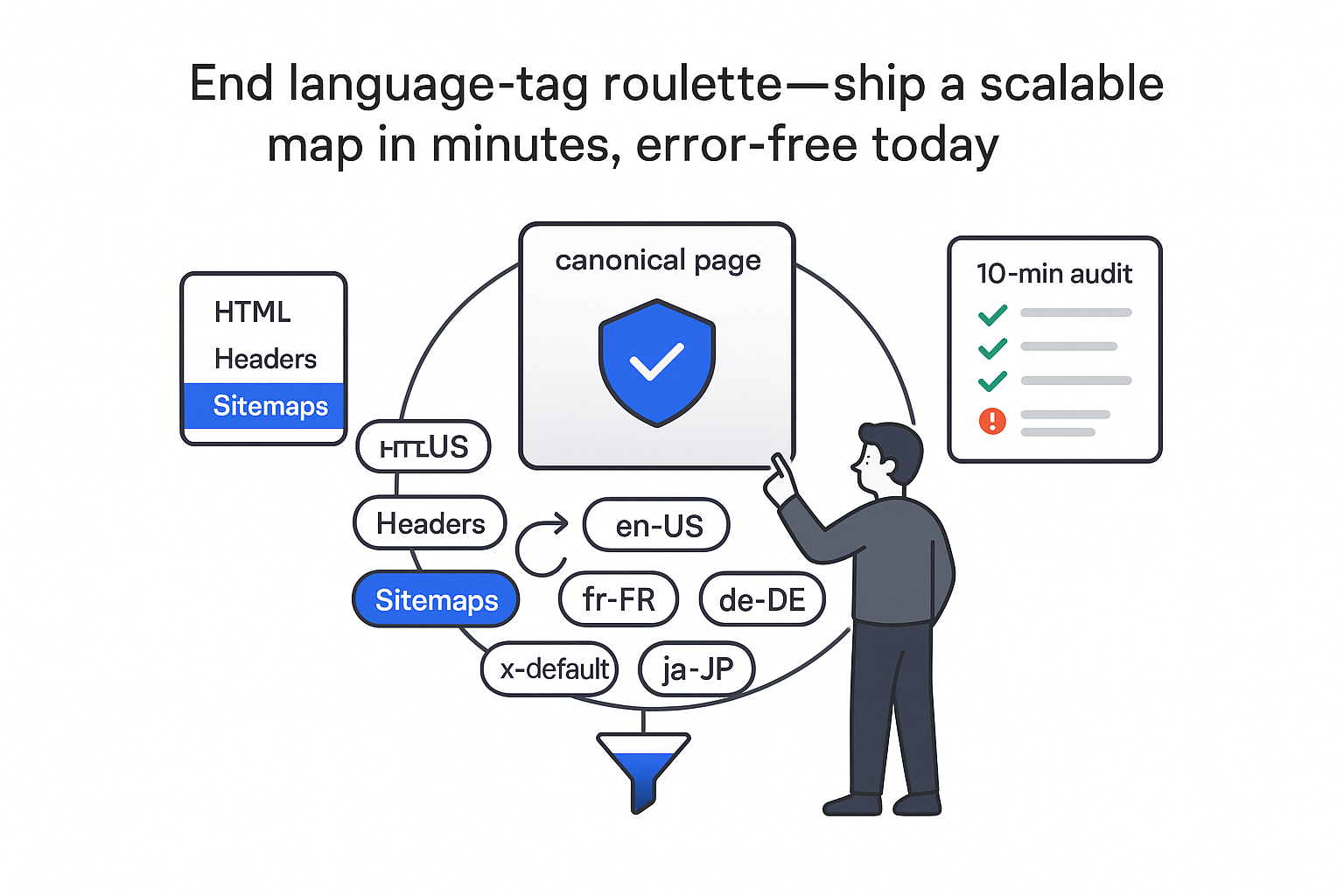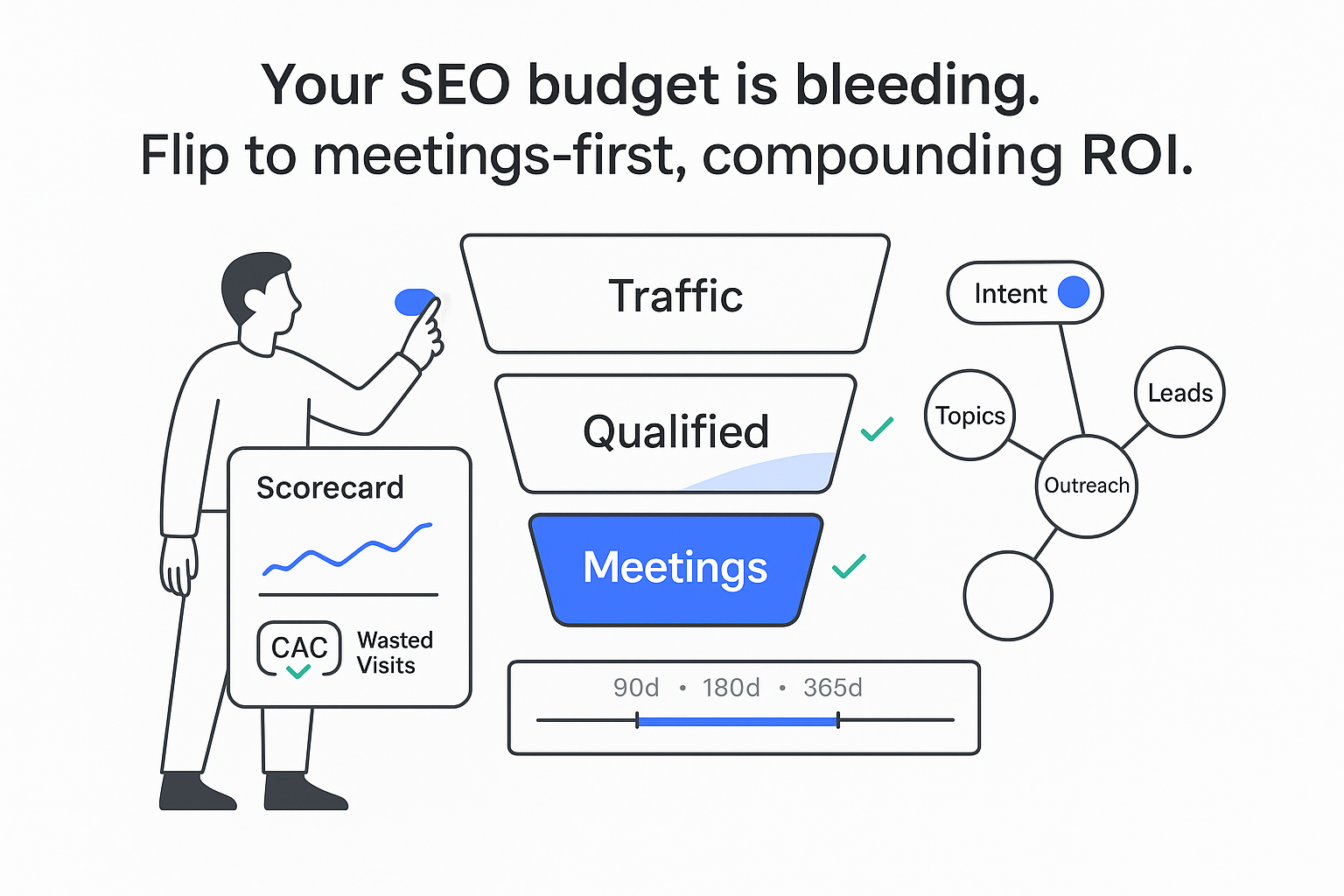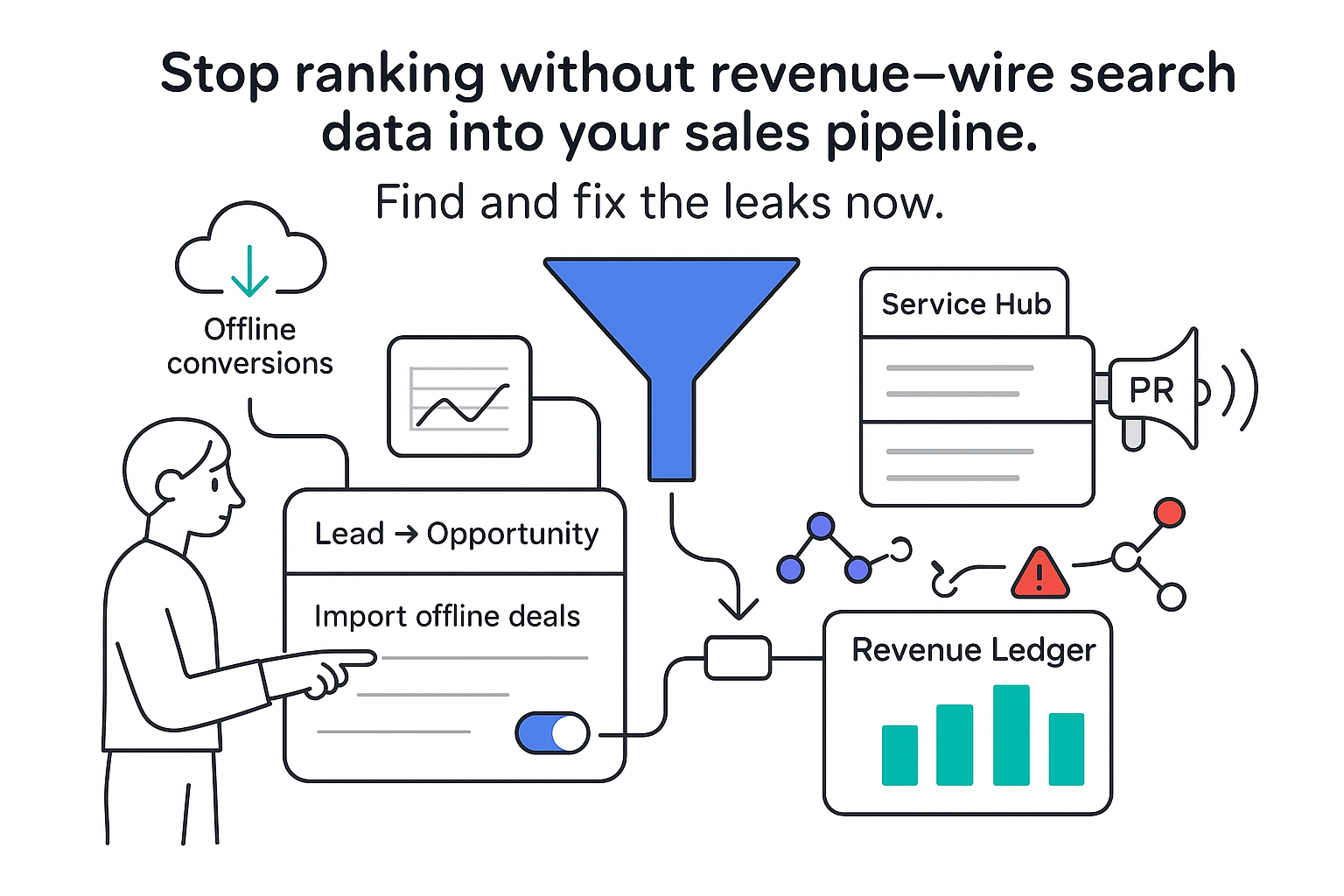If you run a B2B service business, organic growth can feel slow, expensive, or both. I’ve found a quiet fix that moves faster than most tactics and compounds over time: internal linking. Planned well, it pushes your most valuable service pages up the rankings, speeds up indexing, strengthens topical signals around the problems you solve, and nudges visitors toward contact routes with less friction. Skip a strategy and strong pages stay siloed, crawlers waste time, and buyers miss the next logical step. Build one and you get order, accountability, and results you can actually measure.
Why internal linking compounds for B2B services
Internal linking is one of the few levers I can pull that influences rankings, discovery, and conversion paths at the same time. It channels authority toward the URLs that sell, clarifies content relationships for crawlers, and shapes user journeys from awareness to inquiry. When I connect those outcomes to ROI, I typically see lower blended CAC from organic, less dependency on paid, and better conversion rates because visitors can find relevant services, industry pages, and case studies without friction.
Google’s own guidance underscores that internal links help bots discover and understand pages - see their note on internal linking and site architecture. The mechanics connect back to concepts like PageRank flow and crawl budget, and they show up visibly in search results. When links also reflect how buyers think and search - grounded in SEO best practices - the benefits stack.

Fast gains I prioritize
If I need momentum quickly, I start with precise, low-risk changes that move signals where they matter most. Four patterns consistently deliver:
- Link from your highest-authority articles to bottom-funnel service pages using descriptive, intent-rich anchors; place at least one link high on the page.
- Add breadcrumbs between services, industries, and case studies to create consistent paths and pass relevance up the chain.
- Fix “orphan” pages by linking them from the most relevant clusters and, where appropriate, from navigation.
- Surface a small, curated related-content block on key pages so users and crawlers get immediate context and next steps.
These moves reduce crawl depth to commercial URLs, concentrate internal equity where it can convert, and make your architecture more legible to both bots and buyers. Third-party guidance aligns with this approach - see this Source and the hub-and-spoke principles behind the hub and spoke model.

A simple internal linking roadmap
I keep the plan small enough to execute weekly and specific enough to audit. The goal is to remove randomness, not to build a sprawling spreadsheet that no one maintains.
- Inventory and map: export all indexable URLs with inlinks, outlinks, and depth; group them into 6-12 pillars aligned to services and buying stages; choose one primary service target and 2-3 supporting targets per pillar. Tools like Ahrefs, SEMRush, and OnCrawl help.
- Pick donors: identify the posts, guides, comparisons, and industry pages with authority (traffic, links, or rankings) that can donate internal equity to targets. You can also review top pages in Google Search Console.
- Set quotas and cadence: aim for 10-20 meaningful new internal links per week; for core service pages, build toward 15-40 inlinks over 60-90 days, spread across multiple donors.
- Implement with intent: place links in sensible, visible locations; test anchors and placement on desktop and mobile; keep key services within three clicks from the homepage via nav or pillar paths.
- Monitor and adjust: track inlink counts, average position, clicks, and conversion rate for targets; check crawl depth and frequency in your crawler and logs; if performance dips, reduce link density or refine anchors rather than adding more links blindly. For WordPress, the Yoast “text link checker” can surface quick wins.
For small sites (20-50 pages), this matters even more: two to three contextual links to each target from a given donor, placed in the body and a concise related module, is usually enough to show clear movement. Larger sites benefit from quotas per target and sprint cycles, revisiting the map every quarter as new content ships.
Structure, depth, and pagination that help crawlers and buyers
I think in hubs and spokes. Each pillar page acts as the hub; cluster content links into the hub and across to sibling topics, and the hub links out to the cluster and the primary service page. The practical rule: keep key service pages within three clicks from home. If a URL sits deeper, breadcrumbs and a related-content block usually shorten the path without bloating navigation. For a deeper dive on the model, see this hub and spoke model overview.

Navigation and footer links distribute authority broadly, but contextual links inside the body send stronger topical signals because the surrounding text confirms intent. I rely on both, with breadcrumbs bridging hierarchy and reinforcing relevance.

For pagination, I keep paginated lists crawlable with standard links, avoid burying important items beyond page one, and add clean internal links from page one to priority items so they’re not stranded. I don’t rely on deprecated signals - instead, I ensure the sequence is discoverable and that important content is linked from non-paginated pages where possible.
Faceted navigation can explode URL combinations. I prevent crawl waste by canonicalizing or limiting parameterized variations that don’t target real search intent, and by adding clean internal links to the focused versions that do. Small sites can often solve this with a concise HTML sitemap and strong hubs; large sites benefit from topic maps, capped crawl depth, and programmatic breadcrumbs that respect canonicals. If you’re new to these concepts, this primer on clear and logical structures for crawlers is helpful.
Anchor text that avoids cannibalization
Anchors should help the user and the crawler understand the destination. They also need to prevent internal cannibalization. If two pages serve similar queries, I give each a distinct anchor theme and avoid sending exact-match anchors to both. Good anchors are descriptive and accessible - see web accessibility best practices. Google’s documentation and several Google patents suggest context matters, and John Mueller has suggested that longer, descriptive anchor text can provide more context.
- Exact match: 10-20% on the most relevant donors.
- Partial match and synonyms: 30-40% using natural phrasing that mirrors how buyers search.
- Brand or product blend: 10-20% where it adds clarity.
- Contextual CTAs: 10-20% that name the outcome or solution, not just “learn more.”
When a page links multiple times to the same URL, search engines often treat the first anchor as the primary signal. I place the best anchor early, then vary naturally. For a cybersecurity pillar, I might use “managed SOC services” (exact), “24x7 security operations monitoring” (partial), a brand blend where appropriate, and an outcome-oriented CTA like “See how the SOC handles alerts” where intent spikes.
Scaling without bloat
Scaling internal linking is less about volume and more about rules. I bake breadcrumbs and small, pillar-aware related-content modules into templates, vary anchors within those modules, and cap the number of related items so I don’t drown the page. Programmatic “pillar blocks” that list the core service and a few best cluster posts work well when inserted across the cluster; they reinforce relationships without turning into a sitewide link farm.
I avoid over-templated anchors that repeat identical text across hundreds of pages, sitewide footers stuffed with service anchors, and links injected so late in rendering that crawlers miss them. After each template change, I re-crawl to confirm that depth and inlink counts are moving as intended and that links resolve to canonical URLs without 3xx hops or stray nofollow attributes. If legacy redirects exist, I update internal links to point directly at the final destination to stop diluting signals. Also, do not worry about arbitrary link-per-page limits from years ago - the old guidance from 2009 to be exact no longer applies on modern sites.

Measuring impact and a brief case example
To know it’s working, I track a handful of metrics that connect discovery, ranking, and conversion. In my analytics platform, I monitor assisted conversions and session conversion rate for visits that include internal clicks to target pages, along with engagement time on those targets. From search performance data, I review clicks, impressions, and average position for each target URL and look for lift after link sprints. Crawler data and server logs show depth to target pages, inlink counts, anchor distribution, and crawl frequency; rising frequency on services is a good sign that discovery has improved. Clear KPIs keep the team honest: percentage of core pages deeper than level three (I aim for under 10%), inlinks per target (start at 20 and expand toward 40-60 as clusters mature), CTR from related modules and in-content CTAs, and conversion rate from sessions that include a click to a service or case study. When in doubt, validate changes with A/B testing.
A composite example from B2B implementations: a 70-page IT services firm rebuilt its cybersecurity pillar and added roughly 120 new contextual links to 12 service pages over 90 days. Donors included top-performing blogs, a research report, and three industry pages. Indexing sped up - service updates were found within 24-48 hours instead of a week. Average positions for managed SOC terms moved from page two into mid-page one. Impressions rose first, then clicks followed, and assisted conversions that included a service-page visit increased. The actions behind the lift were straightforward: a pillar rebuild that clarified structure, targeted contextual links from authoritative content to bottom-funnel pages, consistent breadcrumbs across services, industries, and case studies that shortened paths, and removal of 3xx chains so signals weren’t diluted.
Internal linking isn’t a magic switch, but it is fast, visible, and controllable. It works best alongside helpful content and clean technical basics. If I pick clear targets, keep depth low, and build human-friendly anchors that match intent, service pages tend to move - and that movement compounds into lower CAC and a steadier pipeline. For more implementation depth, see guidance on improving user engagement, picking the right CMS controls, and evaluating third party SEO tools. If you need ongoing ownership, consider how SEO teams or agencies will manage the cadence.







.svg)